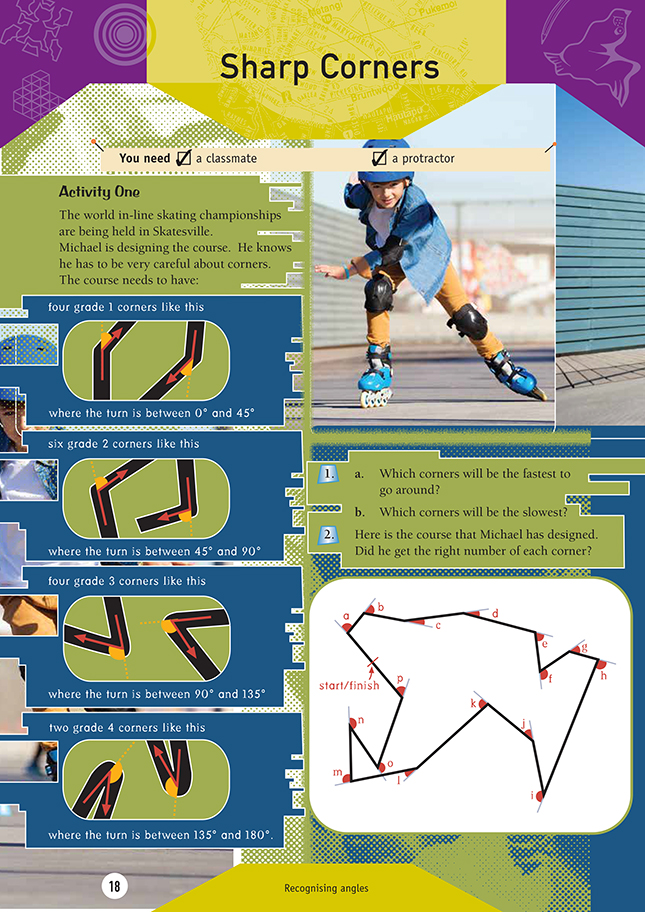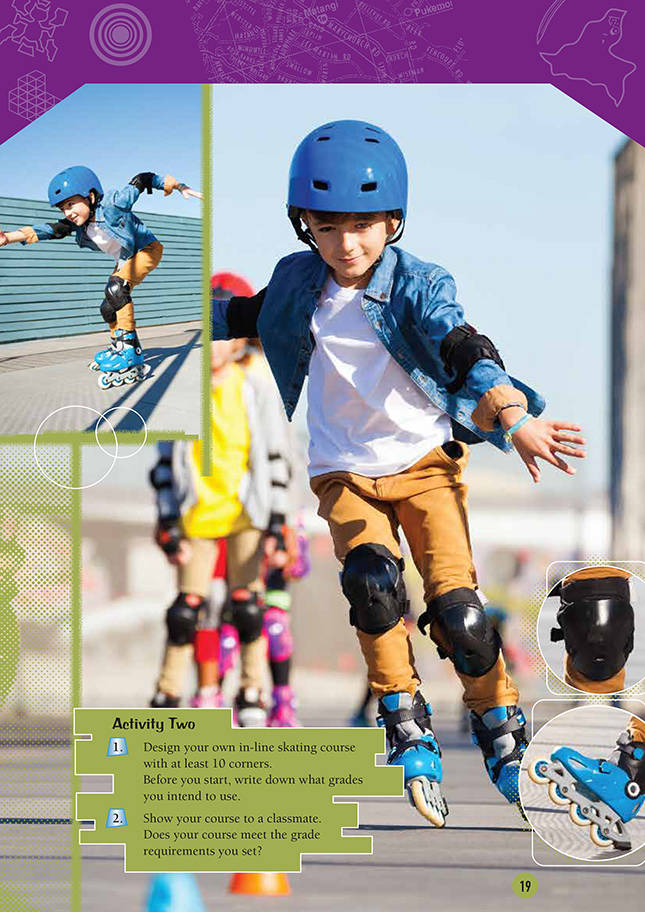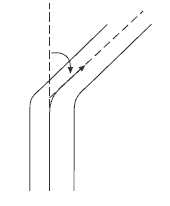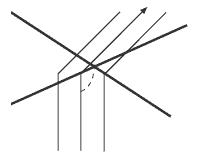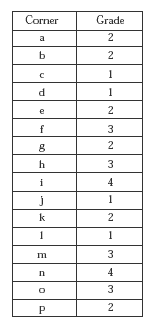This is a level 4 geometry strand activity from the Figure It Out series.
A PDF of the student activity is included.
Click on the image to enlarge it. Click again to close. Download PDF (695 KB)
measure angles using a protractor
classmate
FIO, Level 3-4, Geometry, Sharp Corners, page 18
protractor
Activity One
Before the students begin this activity, ensure that they understand how the angles are measured. The angle to measure is the one between an extension of the original line of direction and the new line of direction:
Make sure that the students are not measuring the angle in the path:
The students can either estimate or measure the size of the angles.
Activity Two
In the process of designing their own course, the students get an opportunity to apply their understanding of angles. Some students may do this without using a protractor. However, when the students are checking their classmate’s course, you could ask them to measure and record the angle size rather than simply record the grade of each corner.
The Answers and Teachers’ Notes for Geometry, Figure It Out, Level 3, pages 14–15 has very useful notes about acute and obtuse angles. You could discuss these angles with the class.
The acute angle is less than 90°:
The obtuse angle is greater than 90° but less than 180°:
The reflex angle is greater than 180° but less than 360°:
You could also reinforce the students’ understanding that the adjacent angles (x and y) on a straight line add up to 180°:
Answers to Activities
Activity One
1. a. Grade one corners are the fastest.
b. Grade four corners are the slowest.
2. Yes. The table at the top of the next column shows the corners and their grades.
Activity Two
Practical activity. Answers will vary.
